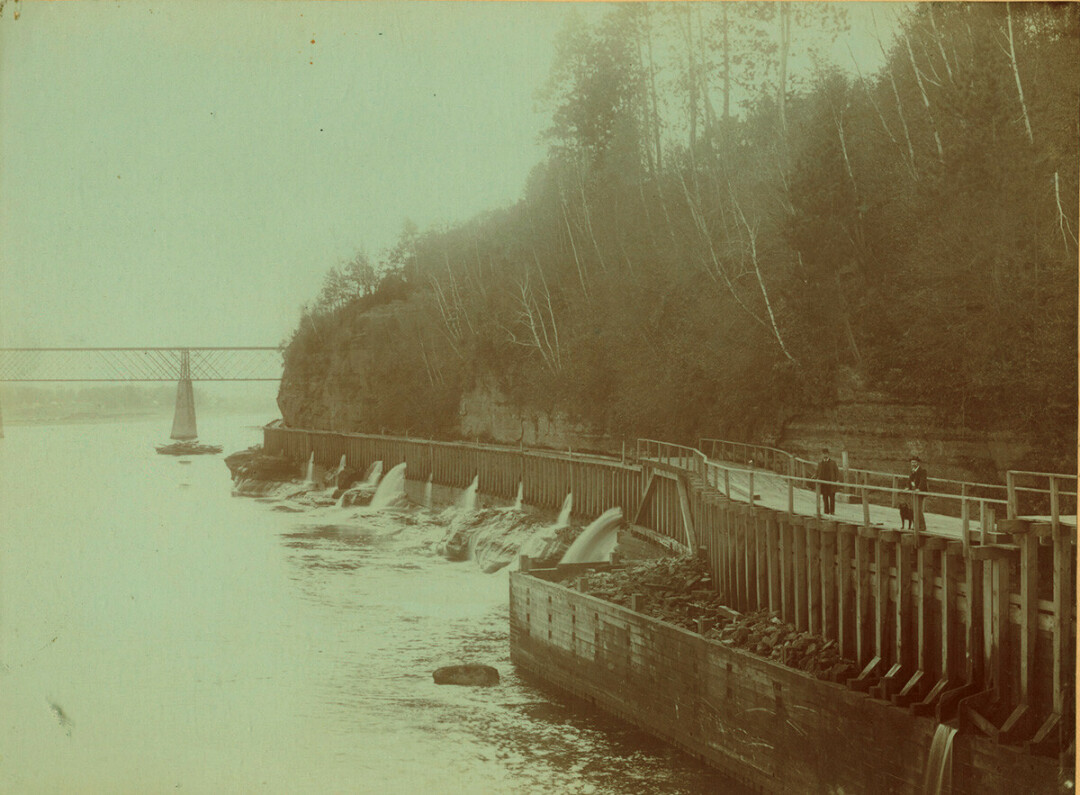Five Cool Things We Learned While Creating the Chippewa River Trolley Co. Tour
we learned way too much for a 90-minute tour, so we’re sharing some extra details here

The Chippewa Valley Trolley Co. offers a 90-minute “signature tour” through Eau Claire’s past and present. We learned a whole lot – and compiled way too much information to fit into 90 minutes – while putting that tour together. Here are a few interesting nuggets from the past.
1. OLD-FASHIONED SOCIAL DISTANCING
Long before it was home to ballfields and picnics, Eau Claire’s iconic Carson Park had another use: as a quarantine zone. During a smallpox outbreak in the 1860s, it became home to a hospital that locals dubbed “The Pest House.” (They didn’t mince words back then, did they?) Calling it a “hospital” was an exaggeration: In fact, smallpox sufferers were probably left there to fend for themselves in an early form of social distancing. Even after the “Pest House” closed, people avoided the area, probably because of its connection to disease. The hospital eventually burned down, and then the entire peninsula burned in 1889. The land finally became a park after lumber baron William Carson’s heirs donated it to the city in 1915 on the condition that the park be named after their father.
2. ELLA THE ELEPHANT
Ella the Elephant died the way she lived: in the circus. Billed as the “Bicycle Riding Pachyderm,” Ella came to town in 1901 with the B.E. Wallace Circus. Sadly, as the roustabouts were setting up for the show, a sudden storm rolled in and Ella was struck and killed by lightning. The circus had little choice but to bury her where she fell, near what is now the intersection of Garfield and Roosevelt avenues in the Third Ward. The next year, Ella’s remains were exhumed during a grading project on an adjacent racetrack and reburied in what is now the Eastside Hill Neighborhood. They were rediscovered there in 1950 during a basement-digging project!
3. THE FIGHTIN’ CREAM PUFFS
Speaking of bygone activities in the Third Ward, the neighborhood was home to a baseball field in the early 20th century. The hometown team that played there in 1909 had one of the all-time best minor league baseball names: The Eau Claire Cream Puffs. It’s unclear if the team, which played at what was known as the Driving Park, got its nickname because it was expected to be a pushover because the players loved pastries or for some other reason. Ultimately, the Cream Puffs weren’t exactly cream puffs on the field: They finished the season with a winning record (62-57) and placed second in the Class D Minnesota-Wisconsin League. The team changed its name to the much more mundane Commissioners the following season. Notable members on the team under that moniker included Wisconsin-born pitcher (and future hall-of-famer) Burleigh Grimes, the last legal spitball thrower in the majors.
4. FLUME WITH A VIEW
Like a lot of Eau Claire folks, we knew that the city once had a log flume – a man-made channel to carry logs from Point A (Dells Pond) to Point B (Half Moon Lake). But the details we gathered about the flume are pretty astounding: Built in 1880, the flume ran for nearly a mile and a half through town. It began as a wood-covered structure that ran parallel to the Chippewa River, sitting atop a shelf that had been blasted into the rock. Then, the flume veered slightly west, running along uncovered until it went underground at the intersection of Randall and Mappa streets, near what is now the Wisconsin Job Center. From there, it continued about 1,000 feet underground until it emerged at the north end of Half Moon Lake, near what is now the beach. Here, the logs could be sorted and cut by the more than half dozen mills along the lake. When the lumber era drew to a close after the last big log drive down the river in 1908, the flume was closed. Bit by bit, portions of the flume were removed, until 2000 when the City of Eau Claire used sand and gravel to fill in the remaining segments, which were 20 feet below street level.
5. MONUMENTAL BRIDGE
Since it was closed to train traffic in 1992, the “High Bridge” across the Chippewa River was almost forgotten until it reopened as a pedestrian and bike trail in 2015. The bridge was built in 1881 by the Chicago, St. Paul, Minneapolis, & Omaha Railroad, which later became part of the Chicago & North Western Railway (which is why it’s been called the Omaha Bridge and the North Western Bridge). The bridge is special not only for its height (a dizzying 80 feet above the river) and its construction (it’s built from iron, not steel, arranged in an interlocking lattice pattern) but also its age. Built in 1881, the bridge is still standing strong after nearly a century and a half. If you’re counting, that means it’s actually older than internationally known landmarks including the Statue of Liberty, the Eiffel Tower, and the Tower Bridge in London!



















